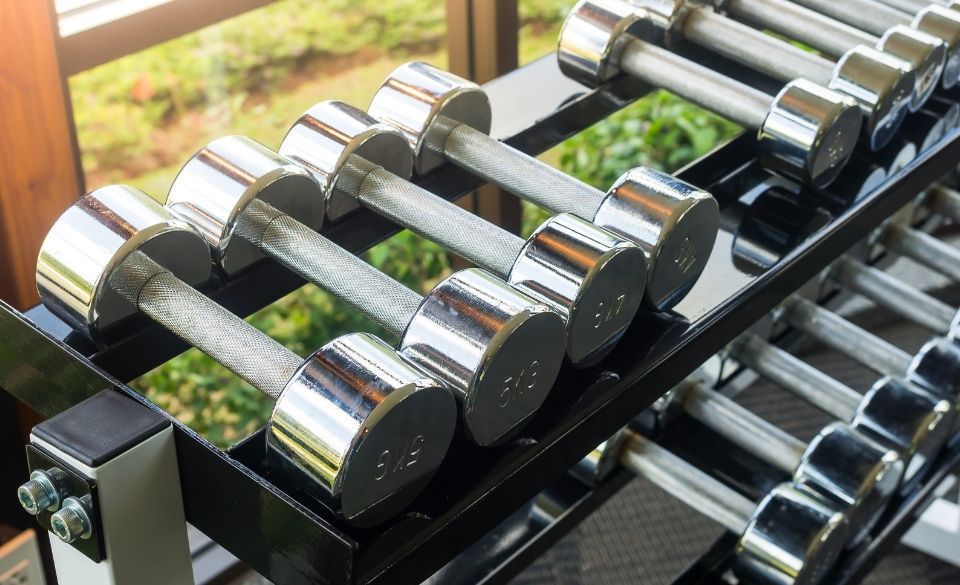
Helms Row Exercise – Muscles Worked, Alternatives & More!
Page Contents
There are so many new and exciting exercises in 2022 that it’s hard to keep up. Everyone wants to keep their WOD fresh and exciting, but the average person just wants a quick exercise to fit in around their other life commitments.
And sometimes, the simplest exercises can be the most beneficial for the muscles worked. Take the Helms row exercise for example.
This is a dumbbell exercise that adds such a straightforward twist to regular lifts that you won’t believe it isn’t more popular.
If you’re looking for an exercise that’s easy, effective, and doesn’t need a Ph.D. to understand, then welcome to our Helms row guide including the benefits of this workout, alternatives & more.
Helms Row Exercise – A Complete Guide
One of the best things about dumbbells is that they’re a great addition to any existing exercise. If an arm workout has a lot of benefits without a dumbbell, then adding one too is just going to enhance that exercise and make it more efficient.
The Helms row is the embodiment of this philosophy. It takes the motions of a rowing machine and adds the weight of dumbbells, increasing the potential for building your arm and shoulder muscle strength while also working your back muscles.
Even better, the whole point of the Helms row is to support the areas of your body that need support during this exercise. By using a weight bench to rest on with your chest, you can focus on lifting and using your back muscles to support the weight of the dumbbells.
The name of this workout might come from another word for the wheel of a ship, the helm.
Back in the day operating the helm of a ship required incredible arm strength as you were turning the full force of the boat with this wheel. If that doesn’t speak to the benefits of the Helms row, then not much else will!
Here is a complete guide to the steps for the Helms row exercise:
1. Make sure your dumbbells are set at a weight that you’re comfortable lifting but are still a challenge for you.
2. Pick up the dumbbells and stand in front of the weight bench, then bend forward so that your chest is resting on the tip of the bench.
3. Spread your feet so that they’re roughly hip width apart and stand with them slightly behind the rest of your body.
4. Begin to lift the dumbbells up and back, so that your elbow bends at a 90-degree angle when lifting.
5. Repeat for as many reps as possible and increase the weight of the dumbbells if you don’t feel challenged enough.
Helms Row Muscles Worked
Because the Helms row merges two types of exercise, rows, and lifts, you’re going to be working muscles associated with both of those as well as more.
One of the main muscles that benefit from the Helms row is the trapezius muscle, which covers the name of your neck and the upper back.
This muscle helps to control your posture and your spine and is also an area prone to tearing. By adding the Helms row to your routine, you can strengthen the trapezius muscle and reduce your risk of injury.
You’ll also be feeling the benefits in your rhomboids, the muscles that sit at the back of your shoulders. Because Helms rows involve lifting your shoulders with the added weight of a dumbbell, they can help build strength and endurance in your rhomboids.
Finally, the Helms row will provide a great workout for your biceps. These will be focusing on lifting the dumbbell and because your shoulders are too busy supporting themselves, they won’t help your biceps as much as usual lifts.
This will mean that your biceps need to shape up quickly and work them harder without much effort from you.
Helms Row Vs Pendlay Row – How They Compare?
The Helms row can be seen as a variation of the Pendlay row. So, what are the main differences between the Helms row vs Pendlay row?
For one, the Pendlay row involves using a barbell and not a dumbbell. This means that your arms have less freedom of movement in the Pendlay row, but you’re able to lift a higher weight at once because the weight is evenly balanced between both arms.
The Pendlay row also doesn’t involve using a weight bench to support your chest. You’re free-standing for the entirety of this lift.
Another difference is in the grip between the Pendlay row and the Helms row. With the Helms row, you have flexibility in whether you use an overhand grip or an underhand grip to hold the dumbbells.
With the Pendlay row, you need to use an overarm grip due to the nature of the lift. Using an underhand grip would be very difficult, if not impossible.
Popular Helms Row Alternatives
The Helms row is a type of lift under the category of chest supported rows, meaning there are a variety of alternatives for you to try.
One of the most similar is the chest-supported barbell row. This is pretty self-explanatory; it’s a Helms row but using a barbell instead of a dumbbell.
If you prefer to lift with a barbell or just don’t have a good pair of dumbbells to use, then the chest-supported barbell lift is a good alternative to the Helms row while still keeping many of the benefits.
Another variation you can do with the helms row is a single-handed lift. This is as simple as just using one dumbbell to lift instead of two.
This adaptation can be great for beginners, or those recovering from an injury in one of their arms. You can use your free arm to provide extra support to the rest of your body on the weight bench.
Helms Row Exercise – Closing Thoughts
So, in summary, the Helms row is a deceivingly simple but amazingly beneficial dumbbell workout, that doesn’t take much time or preparation to try.
Just got a new, shiny set of dumbbells? If you’re looking for easy and interesting exercises to try just like the Helms row, then keep updated on our website or other elite sports blogs for workout guides, WOD recommendations, and more.


